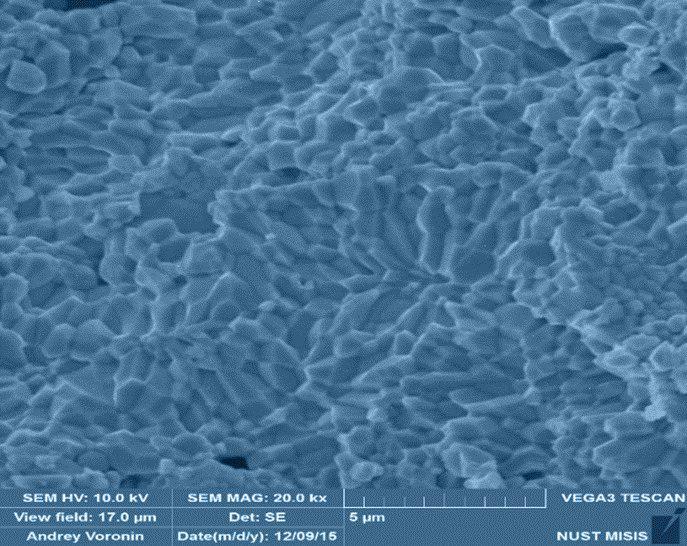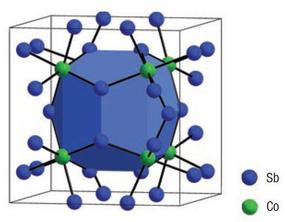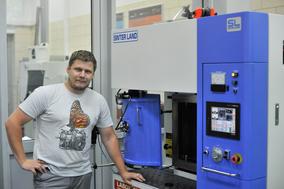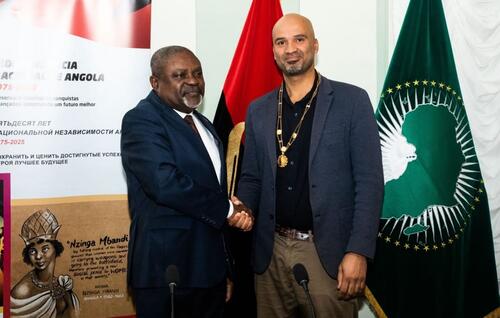Scientists from the NUST MISIS Energy Efficiency Center have developed an efficient and quick way to produce the material from which high-efficient thermoelectric generators used for spacecrafts are made. The material is able to directly convert thermal energy into electrical energy.
The ability to convert thermal energy into electrical was discovered in 1821 by German physicist Thomas Seebeck. The technologies that can utilize Seebeck`s effect on an industrial scale are still far from being perfect — mankind is just learning now how to create thermoelectric materials, and most of the developments have not yet emerged outside laboratories. However, thermoelectric materials are widely used in power generation and refrigeration.Additionally, thermoelectric generators working off the heat of radioactive decay are installed on the famous spacecrafts Cassini, which studies the surroundings of Saturn, and New Horizon, which examines Pluto and the Kuiper Belt. The power generator on Curiosity the Marsrover operates on the same principle. There are also examples on Earth: notably the development of electric power from heat transmitted through elements of a vehicle’s exhaust gas system. Also, there are works being conducted on the development of thermalelectrogenerators that could increase the effectiveness of various types of power plants.
This new material created by NUST MISIS scientists will join the list of the University`s developments for space.
“We actively cooperate with representatives of the aviation and space industries. Currently, our university is carrying out about 30 research projects by order of the aerospace industry. Included [in that number] is United Aircraft Corporation, which is interested in implementing a number of NUST MISIS developments for the realization of the corporation`s strategic objectives”, said Alevtina Chernikova, Rector of NUST MISIS.
Thermoelectric materials, obtained at NUST MISIS, combine two “types” of atoms: rigidly fixed in atomic sites in lattices, which ensures high conductivity and freely oscillation, both of which dramatically reduce thermal conductivity because atoms weakly connected with crystalline scaffold effectively dissipate heat. It was possible to obtain this combination through the creation of intermetallic compounds, a crystal structure containing voids. Scientists obtained the necessary combination of properties by filling them with “guest” atoms without disrupting the crystal lattice. The higher the electroconductivity of obtained substances and the lower the conductivity, the higher the parameter of thermoelectric materials — thermoelectric soundness, is.
Skutterudite — an intermetallic compound of cobalt and antimony, CoSb3 — has become one of the most promising of such materials. The maximum thermoelectric soundness occurs in the material when the difference of surface temperatures is 400 to 500 degrees C. For comparison, in the most famous thermoelectric material — bismuth telluride — the maximum occurs at temperature differences of 100 to 150 degrees C and reaches the value of ZT=1.2.
To achieve high quality in the case of an antimony-cobalt system (ZT=1.4), it is necessary to use rare-earth elements as the metal, such as ytterbium, or to combine two expensive metals. The soundness of 1.8 only became possible to obtain by introducing lattice atoms of three different metals into the crystal.
“We managed to solve a problem through the use of indium as a filler and selection of initial ratio of metals, which allowed us to synthesize the desired thermoelectric composition in an open reactor. Thanks to this approach we were able to conduct the synthesis in an open reactor in just two minutes with subsequent annealing of the resulting sample over the next 5 hours. The combination of the materials used and the characteristics of the synthesis process has accelerated the creation process by several dozen times, which also affects the cost of obtaining such materials. The resulting values of thermoelectric efficiency ZT=1.5 has become arecord for skutterudite with one type of ‘guest’ atoms”, said Andrey Voronin, member of the research group, and associate at the NUST MISIS Energy Efficiency Center.
According to the project`s authors, the previously proposed plans of thermoelectric materials were expensive for several reasons, not only because of the metals being used. They involved two weeks of synthesis of a reaction mixture in full vacuum vials. To obtain this material in other ways is a very difficult process due to the fact that antimony is a highly volatile metal. During extended melting, antimony’s steam may lead to uncontrolled byproduct —the CoSb2 phase, which is absolutely useless from the point of view of thermoelectricity characteristics.





